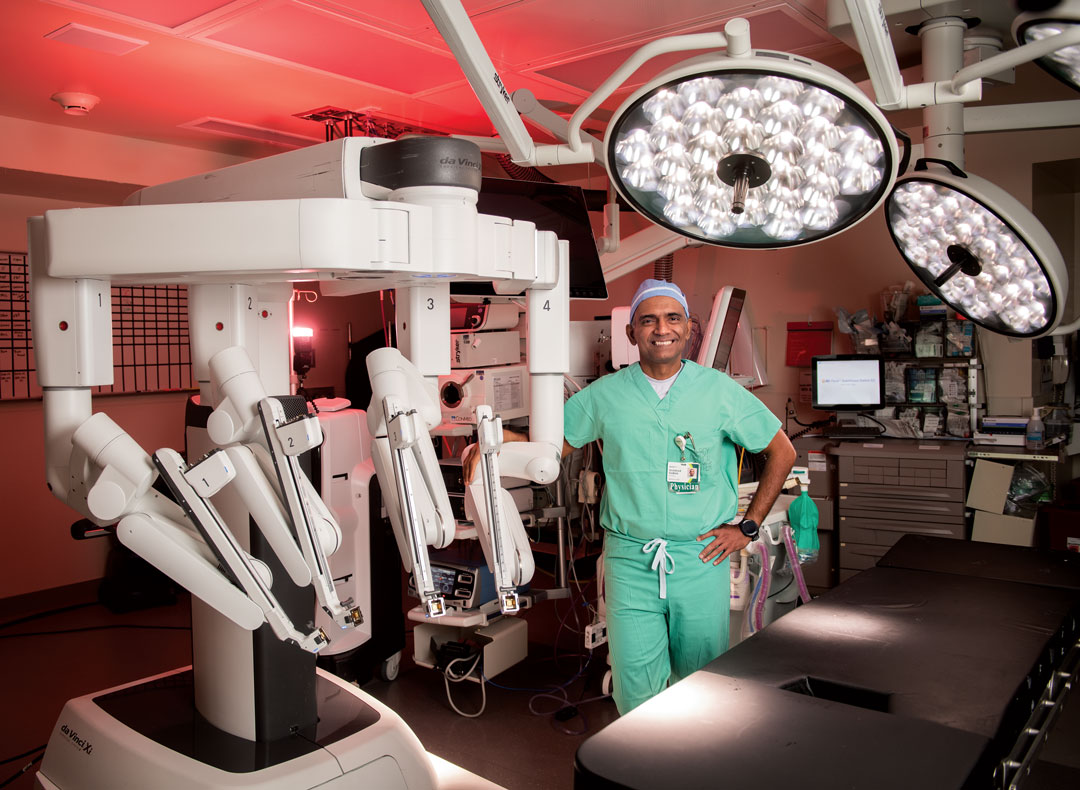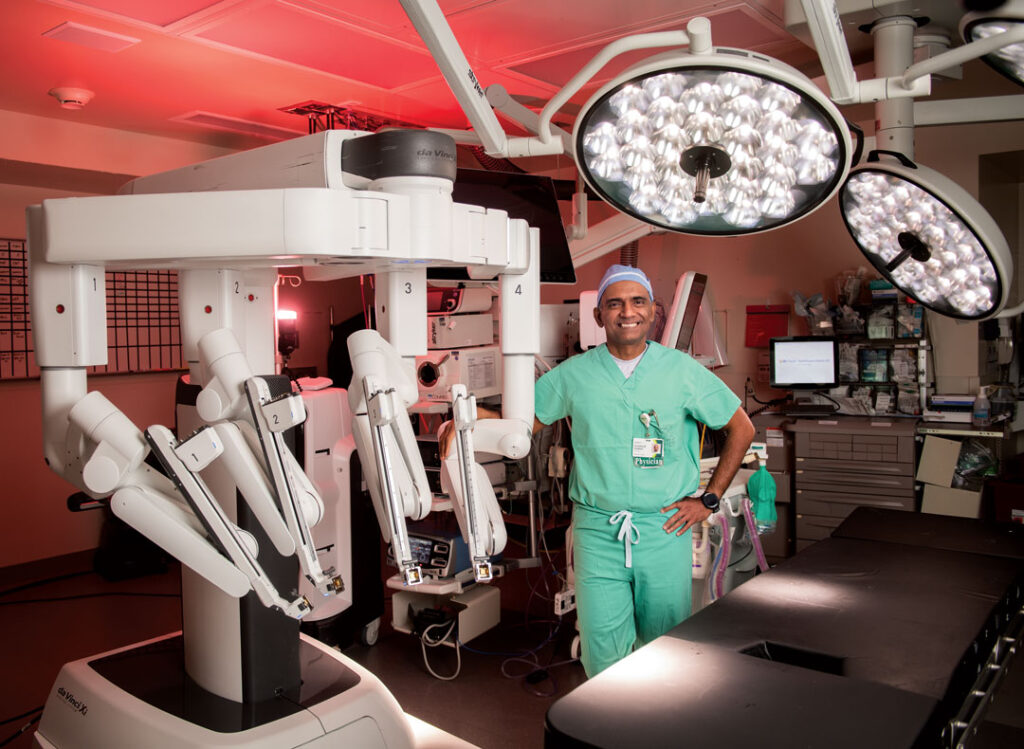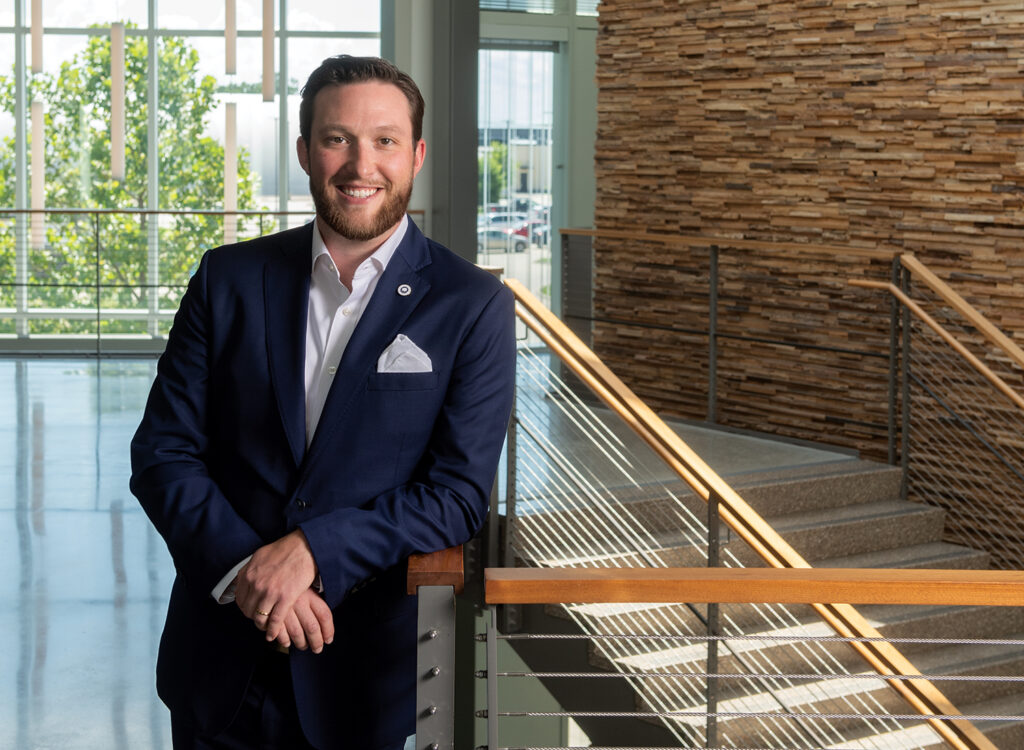Hospitals across Iowa implementing robotic technology in surgery

Lisa Rossi Oct 17, 2025 | 6:00 am
5 min read time
1,187 wordsBusiness Record Insider, Health and WellnessAs a bystander watching Dr. Shankar Raman work, you might think he’s playing a video game.
Each hand is on a controller. He’s sitting at a large black console, staring at a screen, focused and still.
Raman, a colorectal surgeon and division chair, Des Moines surgical care at MercyOne Des Moines Medical Center, is actually performing surgery — a sigmoid resection — to treat colon cancer using a robotic device called the da Vinci Xi.
The way it works is this: He makes five small incisions in a patient’s body and then he puts in hollow, cylindrical ports and attaches the ports to the robot. Next, he introduces the surgical instrument through the ports the robot is connected to, he said. Then, from a location across the room, he sits and manipulates the robot, making precise cuts through the large intestine. The robot acts as a hand in the three-hour surgery.
“The instruments eliminate any tremor,” he said. “So I can be very precise and … lose the least amount of blood.”
Throughout the room are screens that visualize the surgery.
“[There] are numerous ways in which the robot helped me perform the operation safely and competently,” he said.
MercyOne is one of several hospital systems statewide using robots to assist in surgery. Surgeons say it prolongs careers because instead of standing for multiple hours at a time, they sit at a console. It also reduces the invasiveness of surgery and the recovery time for patients, and serves as a recruitment tool for new surgeons, who expect to use the devices, local surgeons and hospital officials said.
“With the advent of the robot, there became this synergy between the dexterity that you have in open surgery and the patient benefits that you see from minimally invasive or laparoscopic surgery,” said Dr. Joseph Losh, general and trauma surgeon at MercyOne Des Moines Medical Center. “The way that these instruments are made, they literally move the way that your hands or your wrists move.”
In fact, the instruments can in some ways function better than the human hand, Losh said, explaining that a human hand can rotate 180 degrees, but the wrist instrument can rotate “a full 360 and then some.”
“That extra dexterity can come in handy when you’re trying to do very technical things in tight areas,” he said.
Also, the benefits of surgery without a “big open incision are totally indisputable,” he said.
“Pain control, recovery, return to work, return to life,” he said.
Dr. Matthew Trump, a doctor of osteopathic medicine at the Iowa Clinic, said he uses an ion robotic bronchoscopy system to diagnose lung cancer.
“It allows us to do it all in one procedure,” Trump said. “It saves the patient time and exposure to anesthesia. It’s a big improvement.”
Losh said he recalls having two patients, both older women, come in on subsequent days, both with a perforated peptic ulcer.
On one of the women, he was able to use the robot, the other had an open surgery, he said.
“And so I got to see them recover side-by-side,” he said.
“The gal with the robotic surgery was up in the chair and smiling at me the next morning,” he said. “And the other gal can’t get out of bed.”
And the difference in the trajectory of the recovery gets “wider and wider over the next few days,” he said.
“[It’s] to the point where one patient’s ready to go home by the time the other patient has caught up to the post-op day one.”
It’s fairly common for hospitals to have policies where they only use robotics for scheduled cases, Losh said.
Losh said he’s been part of a push to gain 24/7 access to robotics for emergency surgical patients.
“There’s this population of patients that don’t know that they are going to need surgery; they reap just as much benefit from this technology as anybody else,” he said. “Really, in that light, it becomes a health care equity issue.”
Statewide, there are 15 da Vinci robotics systems across MercyOne and 129 da Vinci-trained surgeons. MercyOne is the only bariatric program in the metro doing robotics, according to the hospital.
“MercyOne is proud to be able to offer robotic surgery to the patients who can benefit regardless of the time or day of the week,” Losh said in an email. “This is just a piece of pushing for equitable health care, but one that is within our control. Getting this accomplished was important to us; so much so that I’ve presented our experience to leadership stakeholders to try to spread the idea across the MercyOne system.”
In 2024, surgical procedures at MercyOne were split approximately 50% robotic, 50% open and laparoscopic, said Alex Carfrae, public relations lead at MercyOne.
There are currently more than 10,000 da Vinci systems in hospitals globally, according to Intuitive, the company that manufactures the surgical system as well as other technologies. Also, more than 2.6 million
da Vinci procedures were performed in 2024 globally.
The da Vinci technology allows surgeons to see a patient’s anatomy using a “highly magnified, 3D high-definition view of the surgical area, which is also displayed to the entire operating theatre,” according to Intuitive.
“The surgeon has total control of the da Vinci system’s movements via the surgeon console,” a company spokesperson wrote in an email. “During a procedure, the da Vinci system translates the surgeon’s hand movements in real time, bending and rotating the instruments while performing the procedure.”
University of Iowa Health Care is among those that also uses robotics in surgery. DJ Yunek, clinical practice leader for the robotics program at UI Health Care, said robotics in surgery were first used in 2002 and it was spurred by urologists who saw the value of robots in prostatectomy procedures.
And now, the next generation of surgeons expect to be trained on a robot, said Dr. John Keech, UI clinical professor of cardiothoracic surgery.
“This is the future and they’re expecting to be trained on what that future reality is going to be like,” he said.
Yunek said the future of surgical robots includes the software getting upgrades so surgeons can communicate with each other remotely.
“They’re building something called telepresence, where it’s so much almost like a Zoom call,” Yunek said. “If Dr. Keech is in surgery and he has the need for a colleague of his to look at the same anatomy that he’s looking at, and that provider is not on site, he could potentially remotely call his colleague who could see what he’s seeing and communicate that way.”
As the robots advance, as they get smaller and are more mobile, they will be used more in cases within the chest, said Larie Barker, executive director of surgical services at UnityPoint Health-Des Moines.
“The robot traditionally has been used more for complex cases that require a technology that allows them to have finer, minute motion,” Barker said. “I think that what we’ll see is that it will outpace laparoscopic surgery eventually. Laparoscopic appendectomy is pretty common. I think eventually a robotic appendectomy may become as common.”

Lisa Rossi
Lisa Rossi is a staff writer at Business Record. She covers innovation and entrepreneurship, insurance, health care, and Iowa Stops Hunger.










